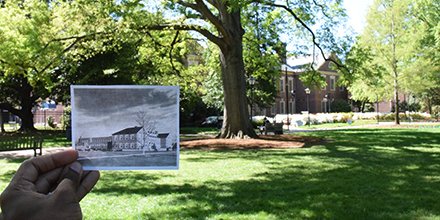The impact of new universities on regional growth: evidence from the United States 1930-80
by Alexandra López Cermeño, Lund University / Universidad Carlos III de Madrid

Universities generate growth spillovers beyond simply the local market. Analysing data on the universities founded in the United States between 1930 and 1980, my research shows that these drove growth of GDP and population not only in the counties that hosted them, but also in their neighbouring regions. But analysis of their longer-term impact suggests that although there are growth spillovers, the positive effect wears out if it is not periodically renewed.
The role of universities in generating growth is rarely contested. But most research tend to associate the presence of a university with long-term path dependency. In the era of knowledge and information, the role of universities as producers of new ideas and technologies is crucial to productivity. New light on this subject is required not only to understand the role of cultural amenities but also to explore the spatial dynamics around them.
Long-term analysis that compares recipient counties of their first universities between 1930 and 1980 with statistically similar counties that never got an institution shows that the effect of these new universities implies 20% more growth in terms of GDP. Moreover, the analysis shows that the new amenities eventually had an impact neighbouring counties. These dynamics seem to be related to population migration.
This sizeable increase of GDP in these counties is corresponded by a similar size increase in population: new universities generate migratory movements of workers, which eventually lead to higher housing prices and costs to use other infrastructures. Higher costs motivate many workers to relocate to nearby areas where housing and infrastructures are less expensive and access to the amenity is still feasible.
The positive effect of new universities is therefore neutralised in the longer term unless further investments reduce congestion costs. Indeed, the role of infrastructures such as roads seems to explain a large share of the effect of universities.
But the interaction of universities and infrastructure seems to be defined by the decreasing importance of the latter: whereas physical access to infrastructure seemed to constrain the impact of new amenities before the 1950s, more recently established institutions seem no longer dependent on face-to-face contact.
There is further evidence on the role of knowledge dynamics in my study: in the earlier half of the period 1930-80, all that mattered was getting a new university in the county, whereas in the latter half of the period, the quality of the institution seems to have become much more relevant. Counties where research-intensive institutions were established during the period 1950-80 grew almost 40% more.
My analysis shows that the effect of new academic institutions during the twentieth century induced regional spatial dynamics in terms of migration and GDP. But it indicates that the impact of these new amenities was seriously constrained by the congestion of utilities, which limited the extent of growth to the short run.
Thus, it questions the extent of the impact generated by these institutions that is so praised in recent literature since it suggests that their growth dynamics are not self-sustaining: further investments are needed to keep up with the agglomeration forces that attract population and firms to these counties.

